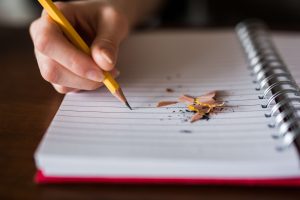 “It is not often that someone comes along who is a true friend and a good writer.
“It is not often that someone comes along who is a true friend and a good writer.
Charlotte was both.”
So ends E.B. White’s 1952 beloved classic, Charlotte’s Web. As much about good writing as it is about true friendship, Charlotte’s Web shows us the importance of finding just the right words for effective communication. Fast forward from 1952 to today; we’re bombarded with more communication channels than ever. Writing — good writing — has never been more important.
While Dyslexia — difficulty with reading — is familiar to many people, another of the three key learning impairments is less so. Dysgraphia, formed from “Dys” and “graphia,” meaning writing, refers to the struggle to write. The term encompasses difficulties with motor skills necessary for handwriting as well as cognitive abilities required for spelling, vocabulary retrieval, clarity of thought, grammar, and memory, among others.
Signs & Symptoms
There are a variety of dysgraphia indicators, but some primary red flags are:
- Excessive erasures
- Mixed upper case and lower case letters
- Inconsistent form and size of letters, or unfinished letters
- Misuse of lines and margins
- Inattentiveness over details when writing
- Difficulty visualizing letter formation beforehand
- Poor legibility
- Poor spatial planning on paper
- Difficulty writing and thinking at the same time (creative writing, taking notes)
- Having a hard time translating ideas to writing, sometimes using the wrong words
- Experiencing pain while writing, including cramping in fingers, wrist and palms
Adapted from Teaching students with dyslexia and dysgraphia: Lessons from teaching and science by Virginia W. Berninger Ph.D. and Beverly J. Wolf M.Ed.
NILD Educational Therapy® is designed to give students the tools to overcome dysgraphia through one-on-one, individualized sessions. I use NILD’s research-based, best-practice methodologies to equip my students with improved abilities to think, reason and process information. My goal is to develop in my students critical skills in reading, spelling, math, and written expression. Tackling dysgraphia is a key step in this equipping process.
At the end of this process, I aim for my students to be more competent and confident learners, achieving success in the classroom and beyond.
Dysgraphia doesn’t have to limit your students academic performance and school and career options later in life. Proper educational therapy can produce dramatic, life-changing results. Dare to dream great things for your student! Don’t give up. Pursue effective therapy. That struggling little girl or guy sitting at your kitchen table might just be the next Jules Verne, Agatha Christie, George Bernard Shaw, or F. Scott Fitzgerald, each of whom struggled with their own learning disabilities. Dare to dream, and dare to believe that dysgraphia, and other learning impairments can be overcome!
